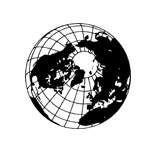Jokiuoman kartoitus ja virtausolosuhteiden mallinnus tukena perkauksen suunnittelussa: esimerkkinä Eurajoki
Nyckelord:
Dredging, Hydraulic modelling, Close-range remote sensing, Bathymetric mapping, Ruoppaus, Hydraulinen mallinnus, Lähikaukokartoitus, Vedenalainen kartoitusAbstract
Dredging has a significant effect on sediment transportation, water quality and flow conditions in a river channel. However, often the effects of dredging are not studied carefully in advance. One reason for this is the lack of suitable study approach. Studies on river dynamics require high quality geometric models of riverbed, banks and floodplain. Accurate terrain and bathymetric data are also crucial components of reliable hydraulic modelling. In this study, we created an approach to model the presumable impacts of dredging. We modelled high discharges and annual flooding magnitudes in Eurajoki River, SW Finland in its current form and after dredging. As the low-sloped channel is heavily vegetated, the aim of the dredging is to improve flow conditions by removing sediment and vegetation within a reach of 8 km. First, we created a geometric model of the riverine environment by combining riverbank topography from national Airborne Laser Scanning (ALS) data by the Finnish National Land Survey and bathymetry, gathered with an Acoustic Doppler Current Profiler (ADCP). The ADCP was attached to a kayak to enable access to shallow areas as well. This way, we were able to model the geometry of the fluvial forms within a few centimetres’ accuracy. Next, we modified the model of the river geometry using GIS software according to the dredging plan. Finally, we used a 2D Computational Fluid Dynamics to model the current and after dredging flow conditions during various flow events. We analysed the effects on dredging on the flood magnitudes and flow conditions based on the models and compared these to the present situation. These models offer improvements on river management and observing the effects on dredging.


.png)






